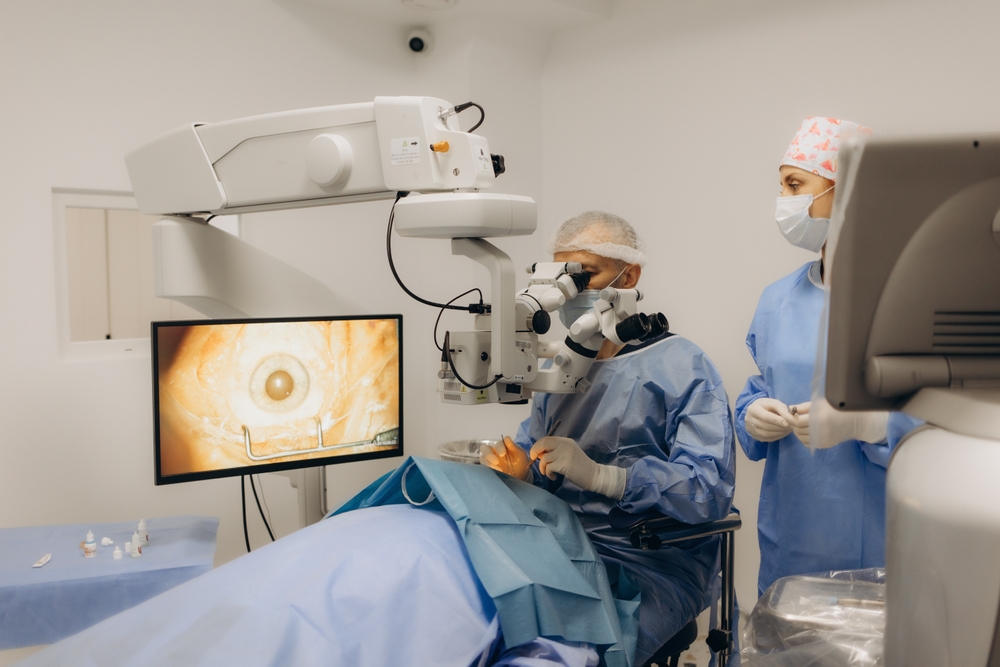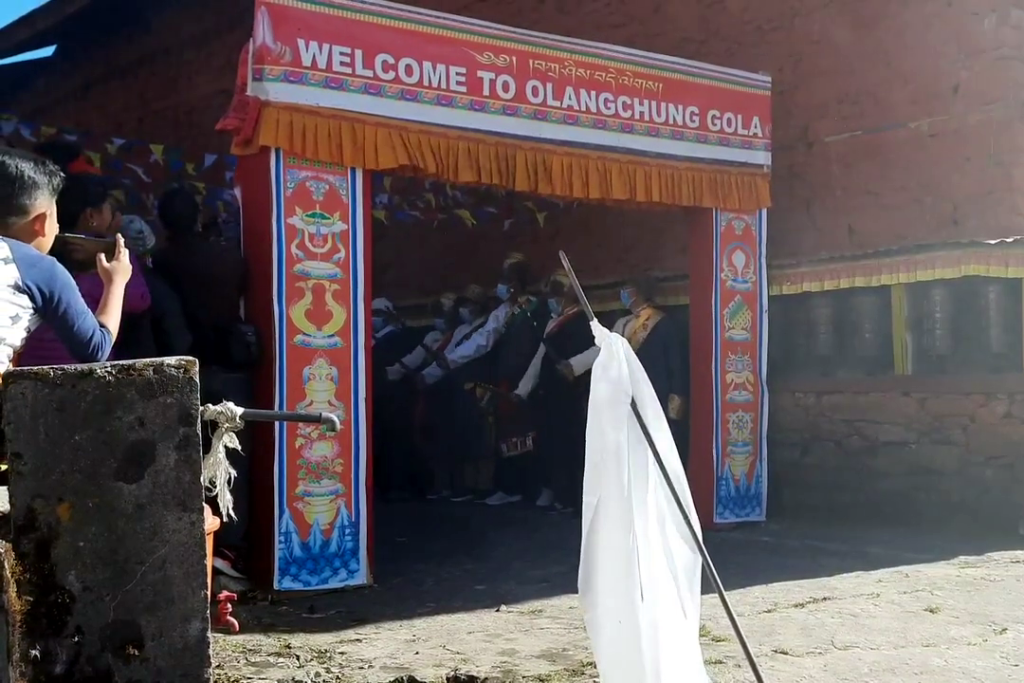Your cart is currently empty!
The Incredible Story of a Nepalese Eye Surgeon Who Gave Vision to 100,000 People for Free

In a world where millions suffer from preventable blindness, stories of extraordinary individuals who dedicate their lives to restoring vision are both inspiring and humbling. One such figure is Dr. Sanduk Ruit, a Nepalese ophthalmologist whose work has literally changed the lives of more than 100,000 people. Born in a remote Himalayan village, Ruit witnessed firsthand the devastating consequences of poverty and lack of access to healthcare. These early experiences shaped his lifelong mission: to ensure that no one should lose their sight simply because they cannot afford treatment.
Dr. Ruit’s story is remarkable not just for the numbers, over 100,000 people restored to sight, but also for the approach he pioneered. By combining high-quality surgical techniques with innovative, low-cost solutions, he created a model that is both scalable and sustainable. His work extends beyond surgery, encompassing training, local production of intraocular lenses, and outreach programs to remote communities. This is a story that demonstrates the power of skill, compassion, and ingenuity to make life-altering change, and it sets the stage for understanding how one person’s vision can literally illuminate thousands of others.
Roots in the Himalayas: Early Life and Formative Loss

Dr. Sanduk Ruit was born in Olangchung Gola, a remote village in Nepal’s high Himalayas, where healthcare and basic services were scarce and reaching even the nearest hospital could take days of travel. Growing up in such an environment instilled in him resilience, determination, and a profound awareness of inequality. A formative moment occurred when his younger sister died of tuberculosis, a preventable and treatable disease but access to care was limited. This personal tragedy left a deep impression on Ruit, motivating him to dedicate his life to ensuring that no one should lose their health or vision because of poverty.
Determined to pursue medicine, Ruit left Nepal to study ophthalmology in India and later advanced his training in Australia. There, he encountered modern techniques for cataract surgery and the use of intraocular lenses, and he was deeply influenced by Dr. Fred Hollows, an Australian ophthalmologist known for his philanthropic work in eye care. Hollows’ approach of combining high-quality surgery with accessible, affordable care resonated with Ruit, shaping his vision of a healthcare model that prioritized both excellence and equity. These experiences abroad would later serve as the foundation for a revolutionary approach to eye care in Nepal.
By the early 1990s, Ruit had returned to Nepal with a clear mission. In 1994, he co-founded the Tilganga Institute of Ophthalmology in Kathmandu. The institute evolved from a surgical center into a hub for innovation, producing intraocular lenses locally to reduce costs and training surgeons to replicate his methods. From the beginning, Ruit emphasized outreach to remote communities, ensuring that geography and poverty would not be barriers to sight-saving surgery. His commitment to both technical precision and social impact set the stage for the extraordinary number of lives he would eventually touch.
Pioneering Affordable Eye Surgery
Dr. Ruit’s approach to cataract surgery was revolutionary because it combined efficiency, affordability, and quality. Unlike conventional methods, which often required expensive imported lenses and costly hospital stays, Ruit developed a technique using manual small-incision cataract surgery (MSICS), which allowed operations to be performed quickly, safely, and without general anesthesia. This method was not only cost-effective but also adaptable to rural settings, making it possible to operate in makeshift clinics and community outreach camps. By producing intraocular lenses locally, he further reduced costs, enabling surgeries to be offered free of charge to patients who could not afford them.
Beyond technique, Ruit emphasized scalability. He trained dozens of surgeons from Nepal and neighboring countries in his methods, ensuring that the knowledge spread and more communities could be reached. By creating a replicable system rather than a one-person effort, he built a sustainable model of eye care. This was critical in regions where access to trained medical professionals is limited. “Teaching surgeons to do this work properly is just as important as doing it yourself,” Ruit explained in interviews, highlighting his belief in empowering others to continue the mission.
His work extended to logistical innovation as well. Dr. Ruit organized eye camps in remote villages, sometimes transporting patients by foot, mule, or helicopter to reach those in the most isolated regions. Teams of nurses, technicians, and surgeons would work for days in community centers, schools, or temporary clinics, performing hundreds of surgeries efficiently while maintaining strict safety standards. This hands-on, mobile approach ensured that even the poorest and most geographically isolated individuals could receive care.
Through these combined innovations, technique, training, and outreach, Ruit created a system capable of restoring vision to tens of thousands of people annually. By 2025, over 100,000 individuals had regained their sight, many of whom had been blind for years. Each restored patient represented not just a personal triumph but also a ripple effect: renewed independence, the ability to work, and the chance for children to remain in school rather than care for blind family members.
Impact on Communities and Individual Lives
The transformative power of Dr. Ruit’s work extends far beyond the operating table. Restoring sight changes the trajectory of entire families and communities. Blindness in rural Nepal often condemns individuals to isolation and poverty; without vision, they cannot farm, work, or care for themselves. Patients who undergo surgery are often able to resume daily activities, regain employment, and participate fully in family life. For many, this marks the first time in years or decades that they experience independence and self-sufficiency.
One patient, a farmer in rural Nepal, recounted how cataract surgery allowed him to return to his land and provide for his family after being blind for five years. “Before, I could do nothing. Now I can work again, I can see my children,” he said. Stories like these are repeated daily at Tilganga Institute and outreach camps, illustrating that Ruit’s work does more than heal eyes; it restores dignity, hope, and opportunity. The economic and social impact is tangible, particularly in rural areas where one person’s productivity affects an entire household.
Beyond individual stories, Ruit’s model has inspired similar initiatives internationally. His techniques and training programs have been adopted in countries across Asia and Africa, helping to combat preventable blindness on a global scale. Organizations such as the Fred Hollows Foundation and local NGOs collaborate with his institute, creating networks that extend the reach of his life-changing methods. The combination of low-cost surgical innovation and community-based outreach has become a blueprint for sustainable healthcare interventions in resource-limited regions.
Importantly, Dr. Ruit’s work highlights the intersection of medicine and social justice. By removing financial and geographic barriers, he has shown that world-class healthcare does not have to be confined to wealthy urban centers. The scale and impact of his work illustrate that medical innovation and compassion can coexist to create profound societal change, reminding us that access to healthcare is a fundamental human right.
Recognition and Legacy
Despite his enormous impact, Dr. Ruit remains remarkably humble, often emphasizing that he is only a facilitator of change. Internationally, however, his work has earned numerous accolades, including the Padma Shri Award from India and the Right Livelihood Award, sometimes referred to as the “Alternative Nobel Prize.” These honors recognize not just his surgical skill but also his dedication to serving marginalized populations, highlighting the global significance of his achievements.
His legacy is also embedded in the surgeons he has trained. Many of his trainees have returned to remote regions to establish their own clinics and eye care programs, creating a multiplier effect that extends the reach of his mission. This emphasis on teaching and mentorship ensures that the impact of Ruit’s work will endure long after he retires. The Tilganga Institute itself continues to serve as a center of excellence, conducting research, producing lenses, and setting standards for affordable, high-quality eye care in developing nations.
Moreover, Dr. Ruit has inspired a broader movement of “visionary” healthcare practitioners who combine technical skill with social responsibility. His example demonstrates that innovation is most powerful when it addresses human need directly, rather than being pursued for profit or prestige. The global recognition he receives, though meaningful, is secondary to the tangible lives he has transformed. For countless patients, Ruit’s name may remain unknown, but the gift of sight ensures that his impact is felt in every village and household where he has worked.
Lessons in Compassion, Innovation, and Service
Dr. Sanduk Ruit’s story is a testament to the extraordinary difference one person can make when expertise, empathy, and vision converge. His approach illustrates that solving large-scale problems like preventable blindness requires not just technical skill, but creativity, perseverance, and a commitment to equity. By combining surgical innovation, training, and community outreach, he created a sustainable system that addresses both medical and social barriers to care.
Equally important is the broader lesson for society: access to healthcare should never be dictated by geography or wealth. Ruit’s work challenges governments, NGOs, and the global medical community to prioritize solutions that are both high-quality and accessible, particularly for marginalized populations. It also reminds individuals of the power of skill and compassion, how one person’s dedication can ripple outward, transforming lives, families, and entire communities.
Finally, Ruit’s story inspires reflection on what it means to lead a meaningful life. Beyond accolades and recognition, the true measure of impact lies in the lives restored, the opportunities renewed, and the hope ignited. For readers, the takeaway is clear: whether in healthcare, social work, or everyday life, combining expertise with empathy and a commitment to service can create profound, lasting change. In a world often defined by challenges, Dr. Ruit’s example shows that vision, both literal and metaphorical, can illuminate paths for countless others.
